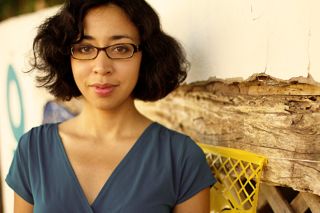
TLAM, and the SLIS department at UW-Madison, had the pleasure of hosting a doctoral candidate from another UW (Washington), Marisa Duarte on April 18, 2013. Marisa’s work at the University of Washington’s Information School analyzes “the impacts of information systems in Indigenous and border communities…[focusing] on the impacts of tribal broadband Internet infrastructures.” She gave a presentation on her work earlier in the day and then met with our class to field questions and to generally pontificate on various issues involving information and Indian Country.
Though Marisa’s research is pointed, her interests (and knowledge) stray far from what is stated above. I would like to focus this post on some of the challenges that Marisa outlined facing her work, those who came before her, and those who will follow in her steps. Many of the issues that she spoke of can be seen clearly in many of the posts from earlier in this semester—which simply highlights the widespread nature of the problems.
The Importance of Trailblazers
Just a few days before Marisa’s visit, Major League Baseball celebrated its annual Jackie Robinson Day. That day is meant to shed light on the path that Mr. Robinson had to create for himself on his journey to Ebbets Field. A similar role, Marisa claims, was played by a first wave of Indigenous LIS professionals. Her work would not be possible without the efforts of countless others such as Madison’s own Janice Rice and others whose work has become very familiar to those of us in TLAM: Loriene Roy, Lotsee Patterson, and Cheryl Metoyer.
Indigenous Knowledge in Academia
As future librarians, we have all been reading how the differences between the knowledge systems most of us came of age in differ from that of Native peoples. We have not had a reason to transpose those readings onto academia, but Marisa discussed those difficulties. Citing the breakthroughs of the women above, she said there is still a long way to go before Indigenous knowledge systems will be recognized in academia. “In normal conversation in academia,” she said, “You can walk around the room and shake hands with people and figure out your research commonalities by stating which discourses your work falls under. However, in Native scholarship, those discourses don’t exist—or at least they are not recognized.
Marisa gave an example of how those working within Indigenous knowledge systems use their tribal affiliation in the way a Western scholar might “use” their research foundations to identify the epistemologies of their work.
Though this is great in their relatively small circles, it is difficult to legitimate this form of research within traditional academy. But things are changing. Marisa cited her colleagues and her mentors as those who will be able to bridge the gap between academia and Indigenous knowledge.
To close this blog, I thought I would share one anecdote that Marisa told almost in passing. When asked about funding and grants for research in Native communities, she said that there is a problem between reality and destruction narratives. Grants, she said, are often given to the proposal that claims that a practice, an institution, or a way of life will be destroyed if the money is not awarded. This goes against the vibrancy of Native cultures that are experienced on the ground and perpetuates a narrative of constant struggle to those outside of Indian country. Though there are many struggles facing Native communities, it is imperative that we not forget the many vibrant, joyful, and exciting things that are happening there as well.
-Dylan Mohr
